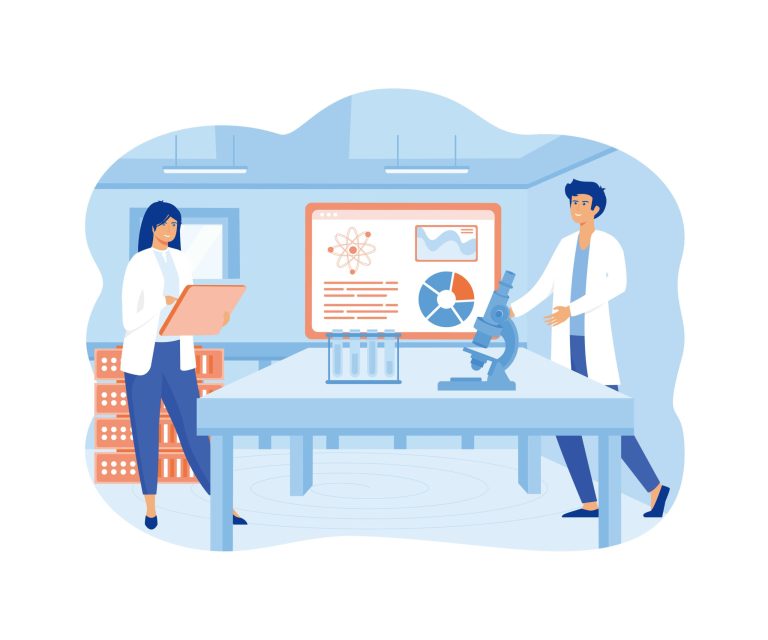The Future of Health: Your Ultimate Guide to a Longevity Clinic
For generations, our approach to health has been largely reactive. We wait for symptoms to appear, a diagnosis to be made, and a treatment plan to be prescribed. This traditional model of medicine has saved countless lives, but it primarily focuses on managing sickness rather than cultivating a state of peak wellness. A new paradigm is emerging, one that seeks to rewrite the rules of aging and redefine what it means to be healthy.
This new frontier is championed by a specialized type of medical practice that is rapidly gaining attention. At the heart of this revolution is the longevity clinic, a place where science and proactive healthcare converge. These clinics operate on a simple yet profound principle: it’s better to prevent the declines of aging than to treat the diseases that result from them. They aim to extend not just your lifespan, but more importantly, your healthspan, the years of your life spent in good health and full function.
Instead of just asking what is wrong with you, a longevity clinic asks what can be made better. It’s a fundamental shift from a disease-centric model to a human-optimization model. By leveraging cutting-edge diagnostics and personalized interventions, these facilities provide a roadmap for navigating the aging process with vitality and resilience. They represent the next step in the evolution of personal healthcare.

What Makes a Longevity Clinic Different from a Regular Doctor’s Office?
The primary distinction lies in philosophy and approach. A standard doctor’s visit is typically driven by a specific complaint. You feel unwell, you see a doctor, they diagnose the problem based on established parameters, and they prescribe a standard-of-care treatment. The goal is to return you to a baseline state of ‘not sick’.
A longevity clinic starts from a different premise. Its goal is to elevate you far beyond a simple baseline. It operates on the principle of proactive optimization, using a vast array of data to understand your unique biology. This allows for interventions that can potentially delay, prevent, or even reverse the biological processes of aging.
Think of it as the difference between a mechanic who fixes your car when it breaks down and a high-performance racing team that constantly tunes the engine for maximum output and durability. The longevity clinic is the racing team for your body. They are not just waiting for a red warning light to appear on your dashboard; they are analyzing every piece of data to ensure you perform at your absolute best for as long as possible.
This proactive stance means they focus on metrics that traditional medicine often overlooks. They measure biomarkers of aging, cellular health, and metabolic function to get a high-resolution picture of your current state and future health risks. The entire process is deeply personalized, moving away from one-size-fits-all solutions.

What Kind of Services Can You Expect?
A visit to a longevity clinic is an immersive experience in personal health data. The journey begins with a comprehensive assessment that goes far deeper than a typical annual physical. This data forms the foundation of your personalized longevity protocol.

How Do They Assess Your Health?
The diagnostic phase is arguably the most critical component of the longevity clinic model. It’s about collecting as many data points as possible to create a complete picture of your biological age and health status. This is a far cry from a simple blood pressure check and cholesterol panel.
Advanced blood analysis is a cornerstone. These panels can include hundreds of biomarkers, looking at everything from inflammatory markers and hormone levels to micronutrient status and metabolic function. They provide a real-time snapshot of what is happening inside your body on a molecular level.
Genetic testing is another key tool. By analyzing your DNA, clinics can identify genetic predispositions to certain conditions. This isn’t about fortune-telling; it’s about understanding your unique genetic blueprint so you can make targeted lifestyle and medical choices to mitigate potential risks. Esteemed institutions like the Mayo Clinic’s Center for Individualized Medicine have been pioneers in using this kind of personalized data to guide patient care.
Perhaps one of the most fascinating tools is epigenetic age testing. While your chronological age is fixed, your biological age is not. Epigenetic clocks analyze chemical tags on your DNA to estimate your body’s true biological age. This provides a powerful metric to track the effectiveness of longevity interventions over time. If your biological age is lower than your chronological age, you are on the right track.
Some elite clinics also offer advanced imaging technologies. Full-body MRI scans and CT coronary angiograms can detect early signs of cancer, cardiovascular disease, and other abnormalities long before they would ever produce symptoms. Specialized clinics like Fountain Life have built their entire model around this principle of ultra-early detection, aiming to find potential issues at stage zero.

What Are the Core Treatment Strategies?
Once your data is collected and analyzed, the clinic’s team of experts develops a multi-faceted protocol tailored specifically to you. These interventions are not mutually exclusive; they are designed to work together synergistically to optimize your health from multiple angles.
Lifestyle optimization is always the foundation. No pill or therapy can replace the fundamental pillars of health. Your protocol will include highly specific recommendations for nutrition, exercise, and sleep. This isn’t just generic advice; it’s guidance based on your unique metabolism, genetics, and goals.
Targeted supplementation is another layer. Based on your bloodwork, you may be prescribed specific vitamins, minerals, or nutraceuticals to correct deficiencies and support cellular function. One of the most talked-about molecules in longevity circles is NAD+, a coenzyme vital for energy production and DNA repair. As we age, NAD+ levels decline, and restoring them is a key therapeutic target. Understanding the role of NAD in cellular repair is central to many anti-aging strategies. Companies focused on cellular health, such as Elysium Health, have brought products targeting NAD+ to a wider consumer market.
Beyond supplements, longevity clinics offer a range of advanced medical therapies. Intravenous (IV) therapy can deliver high doses of nutrients, antioxidants, and compounds like NAD+ directly into the bloodstream for maximum absorption. Bioidentical hormone replacement therapy (BHRT) aims to restore hormone levels to a more youthful state, which can have profound effects on energy, mood, and body composition.
Peptide therapy is another exciting and rapidly growing area. Peptides are short chains of amino acids that act as signaling molecules in the body. Specific peptides can be used to promote tissue repair, reduce inflammation, improve cognitive function, and support a healthy immune system. These are highly targeted therapies that can produce significant results with a strong safety profile when prescribed correctly.
Finally, many clinics are at the forefront of regenerative medicine, exploring therapies like senolytics, which are drugs designed to clear out old, dysfunctional ‘zombie’ cells, and even stem cell therapies. These are the most cutting-edge interventions and represent the future of what these clinics may offer as the science continues to evolve.

Who Should Consider Visiting a Longevity Clinic?
There is a common misconception that longevity medicine is only for the ultra-wealthy or the elderly. While the costs can be significant, the clientele is surprisingly diverse, and the core principles are applicable to almost everyone. The question of whether we can we live to 120 or more has entered the mainstream, sparking curiosity across all age groups.
One key demographic is high-performing individuals and executives. For them, peak cognitive and physical function is a professional asset. They visit longevity clinics to gain a competitive edge, enhance resilience to stress, and maintain their high level of performance for longer.
Another group consists of proactive individuals in their 30s, 40s, and 50s. This is often the age when the first signs of aging begin to appear. These clients are not sick, but they are forward-thinking. They want to invest in their future health, slow down the aging process, and lay the groundwork for a long and vibrant life.
Individuals with a family history of chronic diseases like Alzheimer’s, heart disease, or certain cancers also find immense value in longevity clinics. By understanding their genetic predispositions, they can take aggressive, proactive steps to change their trajectory and potentially avoid the fate that befell previous generations.
Finally, anyone who is simply not satisfied with the standard ‘wait and see’ model of healthcare can benefit. If you believe that your health is your most important asset and you want to take an active, data-driven role in managing it, then the philosophy of a longevity clinic will resonate deeply with you.

Are the Treatments Safe and Regulated?
This is an essential question for anyone considering this type of care. The field of longevity medicine exists on a spectrum, from well-established practices to highly experimental therapies. A reputable clinic will be transparent about this spectrum and operate under the strict supervision of licensed medical doctors.
Many of the core interventions, such as lifestyle changes, hormone optimization, and nutrient therapy, are based on decades of medical research and are widely considered safe and effective when managed by a qualified physician. These form the bedrock of most longevity protocols.
However, the field is also defined by its embrace of innovation. This means that some treatments may be considered ‘off-label’. An off-label use is when a drug or therapy that is approved for one condition is used for another purpose based on scientific evidence and clinical experience. This is a common and legal practice in many areas of medicine.
Because of the pioneering nature of this field, the concept of a thorough and transparent consent process is paramount. Patients must be fully educated on the potential benefits, risks, and the state of the evidence for any proposed treatment. A deep understanding of informed consent for off-label and novel therapies is a hallmark of an ethical and patient-focused clinic. You should always feel empowered to ask questions and understand the ‘why’ behind every recommendation.
The key to ensuring safety is due diligence. Research the clinic’s credentials, the qualifications of its medical staff, and their approach to patient care. A trustworthy clinic will prioritize safety above all else and will be open about what is known and what is still being researched.

How is the Field of Longevity Medicine Evolving?
The field of longevity medicine is not static; it is one of the most dynamic and rapidly evolving areas in all of healthcare. What was considered science fiction just a decade ago is now becoming clinical practice. This rapid pace of discovery is what makes the field so exciting.
The growth has been exponential, with new clinics opening and more physicians seeking to add longevity services to their practices. This boom has created a significant need for specialized education and training programs that teach practitioners how to start a longevity medicine clinic based on evidence-based protocols and sound business practices.
Technology is a major driver of this evolution. Artificial intelligence is beginning to play a larger role in analyzing the vast datasets collected from patients, identifying patterns and personalizing recommendations with a level of precision that was previously impossible. Wearable technology, like continuous glucose monitors and advanced sleep trackers, is providing a constant stream of real-world data that allows for dynamic adjustments to a patient’s protocol.
On the therapeutic side, the pipeline of new molecules and interventions is robust. Researchers are constantly identifying new peptides, senolytic compounds, and gene therapies that could one day become standard tools in the longevity physician’s arsenal. The cost of advanced diagnostics is also decreasing, making these powerful tools more accessible to a broader population.
Ultimately, the evolution of the longevity clinic is pointing towards a future where healthcare is predictive, personalized, preventive, and participatory. It’s a future where your doctor is not just a healer of sickness, but a co-pilot on your journey to sustained peak health. This movement is not just about adding years to life, but more importantly, adding life to years.
Your health is a long-term investment, and a longevity clinic provides the expert guidance and advanced tools to manage that investment for the best possible return: a longer, healthier, and more vibrant life.
Frequently Asked Questions

How can I ensure my staff consistently represents our new practice brand?
Getting your team’s buy-in is crucial for bringing your brand to life beyond a logo or a mission statement. Begin by holding a dedicated training session to explain not just the new brand elements, but the "why" behind them, connecting them to the quality of care you aim to provide. Create a simple internal brand guidebook that outlines key messages, tone of voice for patient communication, and expected behaviors that reflect your practice’s core values.
Consistent reinforcement is just as important as the initial launch. Lead by example in all your interactions and regularly recognize team members who exceptionally embody the brand promise. You can also incorporate brand principles into regular team meetings and even performance reviews to signal their importance. This transforms branding from a marketing exercise into a central part of your practice’s culture.

What is the difference between branding and marketing for a medical practice?
Think of branding as the strategic foundation of who you are as a practice. It is your reputation, your core values, your mission, and the unique promise you make to your patients about the care and experience they will receive. Branding is the long-term process of shaping perception and building the trust that turns a new visitor into a loyal patient.
Marketing, on the other hand, consists of the specific tools and tactics you use to communicate that brand to your audience. This includes activities like running a social media campaign, creating a new website, sending out an email newsletter, or placing a local advertisement. In essence, your brand is the core message, and marketing is the set of actions you take to deliver that message.

How do I measure the success or ROI of my branding efforts?
Measuring the return on investment (ROI) for branding involves looking at both quantitative data and qualitative feedback. Quantitatively, you can track metrics like the number of new patient inquiries, website traffic growth, and appointment booking rates before and after implementing your new brand. A primary goal of branding is differentiation, so you should see a tangible increase in patients choosing your practice.
Qualitatively, you can measure success through patient satisfaction surveys that ask specific questions about their experience and perception of your practice. Monitor online reviews and testimonials for mentions of qualities you’ve defined in your brand, such as "caring," "efficient," or "thorough." A strong brand will also lead to an increase in word-of-mouth referrals, which is a powerful indicator of success.
Are you a healthcare professional ready to be at the forefront of this medical revolution? The future of medicine is proactive, personalized, and preventative. Talking Longevity offers the key to unlocking this future for your practice and your patients. Discover the most comprehensive functional medicine training, longevity training, and biohacking certification programs designed specifically for healthcare professionals, medics, and clinic owners who want to master regenerative medicine protocols and anti-aging therapies.







